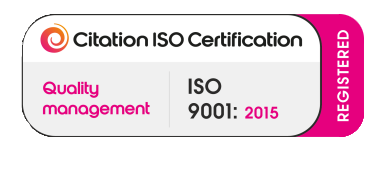
Understanding Waterproof Ratings: IP67 Explained for Campers
Share
If you’ve ever shopped for camping gadgets or outdoor gear, you’ve likely come across terms like "IP67 waterproof" or "IP-rated devices." But what do these ratings really mean? And why should you care if you're a camper, hiker, or outdoor adventurer?
Understanding waterproof ratings, specifically IP67, can help you make smarter decisions about the gear you rely on in unpredictable environments. In this guide, we’ll explain the IP67 rating in simple terms, show you how it compares to others like IP65 and IP68, and spotlight how RUGD’s Power Brick I is purpose-built to thrive in wet, wild, and muddy conditions.
What Does IP67 Mean?
IP67 is a classification under the Ingress Protection (IP) rating system. It defines how well an electronic device resists dust and water ingress.
The code breaks down like this:
- IP: Stands for "Ingress Protection"
- 6: The first digit refers to dust protection. A "6" means the device is totally dust-tight.
- 7: The second digit relates to water resistance. A "7" indicates protection against immersion in water up to 1 metre deep for up to 30 minutes.
In plain English:
An IP67-rated device is fully protected from dust and can survive accidental drops in puddles, rainstorms, or even a quick dunk in a stream. It is well suited for outdoor use.
Why IP67 Matters for Campers
Camping gear needs to do more than just work. It needs to perform reliably in tough environments. Whether you're pitching a tent in wet woods, navigating rocky trails, or dealing with unpredictable weather, your equipment will be tested.
Here’s why IP67 is a camper’s best friend:
- Dustproof durability: Keeps out fine sand and dust, perfect for desert treks or dry trails.
- Water resistance: Survives heavy rain, splashes, and accidental submersion.
- Peace of mind: No need to baby your gear. Focus on the adventure, not the forecast.
If you're camping with tech like power banks, torches, or portable speakers, an IP67 rating ensures they won’t fail when exposed to the elements.
IP67 vs IP65 vs IP68: What’s the Difference?
Understanding the differences between ratings can help you choose the right product for your needs.
| Rating | Dust Protection | Water Protection |
|---|---|---|
| IP65 | Yes | Resistant to low-pressure water jets (splashproof) |
| IP67 | Yes | Immersion in water up to 1m for 30 minutes |
| IP68 | Yes | Immersion beyond 1m (varies by manufacturer) |
- IP65: Great for rain and splashes but not full immersion.
- IP67: More versatile, handles immersion and dusty trails.
- IP68: Excellent for underwater use, but may be more than needed and can increase cost.
For most campers, IP67 hits the sweet spot. It is rugged, waterproof, and reliable.
Real-World Examples of IP67 in Action
- Caught in a downpour? Your IP67 power bank keeps charging.
- Accidentally dropped in the mud? Wipe it off and carry on.
- Cooking dinner in the rain? IP67 devices hold up around steamy conditions.
This level of resilience makes IP67-rated equipment ideal for weekend campers, festival goers, van-lifers, and serious explorers alike.
Spotlight: RUGD Power Brick I – Built for the Outdoors
At RUGD, we don’t just talk tough. We build it. The RUGD Power Brick I is a prime example of what an IP67-rated power bank should be:
- IP67-rated: Waterproof and dustproof. Survives submersion, mud, and the back of your kit bag.
- 10,050mAh Capacity: Powers your phone multiple times. Charge cameras, torches, and more.
- Built-in Torch and SOS Light: Handy for emergencies or late-night campsite setups.
- Durable Design: Drop-tested and ready for real-world use, from mountaintops to muddy festivals.
- Compact and Portable: Toss it in your pack or clip it to your gear. It’s built to travel.
When you’re relying on gear that just needs to work, the Power Brick I delivers. Rain or shine.
How to Care for Your IP67 Gear
Even though IP67 devices are rugged, a little care goes a long way:
- Rinse after muddy exposure to prevent grime build-up.
- Dry thoroughly before charging after water exposure.
- Avoid saltwater dips, as salt can corrode seals over time.
- Don’t test the limits unnecessarily. Protection has boundaries.
Conclusion
If you're serious about outdoor adventures, understanding waterproof ratings like IP67 is more than just tech jargon. It is essential knowledge. IP67-rated devices give you the confidence to embrace the elements without fear of failure.
RUGD’s Power Brick I embodies this rugged reliability, giving you powerful, waterproof performance exactly when and where you need it.
Ready to upgrade your outdoor power game? Shop the RUGD Power Brick I now and stay charged in rain, mud, or dust.
FAQs
Q: What does an IP67 rating mean for camping gear?
A: It means your gear is dust-tight and can withstand immersion in water up to 1 metre deep for 30 minutes. It is ideal for outdoor use.
Q: How does IP67 compare to IP65 or IP68?
A: IP67 offers better protection than splashproof IP65 and solid waterproofing without the sometimes unnecessary depth rating of IP68.
Q: Is the RUGD Power Brick I really waterproof?
A: Yes, it's IP67 certified and tested to withstand rain, splashes, and short-term water immersion.
Q: Can I submerge my IP67 gear for long periods?
A: No. While safe for quick dips, extended submersion may breach the device seals. Stick to rated limits.
Q: Why is waterproofing so important for campers?
A: Because nature doesn’t care if your gear is sensitive. Dust, rain, and puddles are part of the journey. Your gear should be ready for it.
For more rugged tech tips and product spotlights, check out the RUGD blog.


